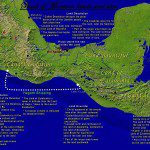
Earlier this evening, I was listening to a recorded interview with the Evangelical Protestant apologist Michael Licona. He said something that I found amusing and that I would like to try to share here:
The State of Illinois sent a tall, lanky man named Abraham Lincoln to the Congress of the United States. After that, he was elected twice to the presidency.
In the television series 24, Dennis Haysbert played David Palmer, a fictional character who was elected to the United States Senate and then, thereafter, became the first black American president.
John F. Kennedy graduated from Harvard University. Afterwards, he was elected to Congress (first to the House of Representatives and then to the Senate), and, finally, as President of the United States.
Barack Obama graduated from Harvard University. A tall, lanky man, he was elected by voters in Illinois to the United States Senate and then, not long thereafter, won election to the White House as the nation’s first non-fictional black president. (Sorry, but Bill Clinton never really counted.)
Now, just think about it:
- Graduated from Harvard University (John F. Kennedy, Barack Obama)
- Elected to Congress (Abraham Lincoln, David Palmer, John F. Kennedy, Barack Obama)
- Elected to Congress by voters in Illinois (Abraham Lincoln, Barack Obama)
- Tall and lanky (Abraham Lincoln, Barack Obama)
- Elected President of the United States (Abraham Lincoln, David Palmer, John F. Kennedy, Barack Obama)
- Elected twice to the U.S. presidency (Abraham Lincoln, Barack Obama)
- First black president of the United States (David Palmer, Barack Obama)
Isn’t it obvious that the most reasonable explanation for “Barack Obama” is that he is a composite fictional character? He was manifestly created by the amalgamation of characteristics borrowed from the real former presidents Abraham Lincoln and John F. Kennedy and from the fictional former president David Palmer. Heck, the invention isn’t even particularly creative or original.
I close with some lines from the prolific atheist/agnostic New Testament scholar Bart D. Ehrman, James A. Gray Distinguished Professor of Religious Studies at the University of North Carolina at Chapel Hill:
Despite the enormous range of opinion, there are several points on which virtually all scholars of antiquity agree. Jesus was a Jewish man, known to be a preacher and teacher, who was crucified (a Roman form of execution) in Jerusalem during the reign of the Roman emperor Tiberius, when Pontius Pilate was the governor of Judea. . . .
It is fair to say that mythicists as a group, and as individuals, are not taken seriously by the vast majority of scholars in the field of New Testament, early Christianity, ancient history, and theology. . . .
The idea that Jesus did not exist is a modern notion. It has no ancient precedents. It was made up in the eighteenth century. One might as well call it a modern myth, the myth of the mythical Jesus. (Did Jesus Exist?: The Historical Argument for Jesus of Nazareth [San Francisco: HarperOne, 2013), 12, 20, 96.












